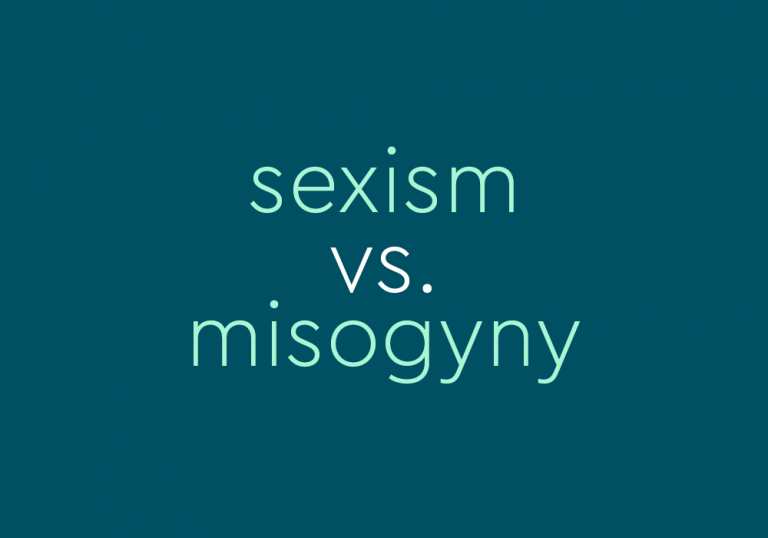“Misogyny” vs. “Sexism”: Do You Know The Difference?

With the recent #MeToo and Times Up movements, equality and the empowerment of women have become household conversations around the world. Everyone from your next-door neighbor to your favorite high-school teacher has likely joined the discussion, using a brand-new set of vocabulary including the words misogyny and sexism. While these two terms may seem similar, there are actually several differences that make them stand on their own. If you’re planning on joining the movement and discussing how to dismantle the patriarchy, make sure to brush up on your terminology by reading on.
What is sexism?
While the inequality of women has existed for thousands of years, the word sexism allegedly wasn’t introduced until the Women’s Liberation Movement of the 1960s. During this era, in which Second Wave Feminism was introduced, women started fighting back against societal oppression. In 1965, Pauline M. Leet defined sexism by comparing it to racism during a “Student-Faculty Forum” at Franklin and Marshall College: “When you argue … that since fewer women write good poetry this justifies their total exclusion, you are taking a position analogous to that of the racist—I might call you in this case a ‘sexist’ … Both the racist and the sexist are acting as if all that has happened had never happened, and both of them are making decisions and coming to conclusions about someone’s value by referring to factors which are in both cases irrelevant.”
In essence, the word sexism is defined as “discrimination based on sex or gender, or the belief that men are superior to women.” A person can be sexist either consciously or subconsciously, especially when it comes to the economic, political, or social discrimination of women. Take, for instance, the rhetoric used to describe a female politician. While a man may be described as speaking with “passion” or “confidence,” a woman who speaks in the same manner may be described as “bossy” or “shrill.” Furthermore, a female politician is more likely to be criticized for what they wear. Someone may doubt that a woman can be a politician, yet they can claim that they still love and admire women.
What is misogyny?
This compares to misogyny, which refers specially to the hatred of women. The word is formed from the Greek roots misein (“to hate”) and gynē (“woman”). Misogyny is a blatant disregard for women; while someone who is sexist may still be opposed to the fact that women make 78 cents to the dollar, a misogynist will believe that women don’t deserve equal pay because they are inherently lesser than men. Misogyny has been prevalent since Ancient Greece, it was a salient topic in Western philosophy, and it continues today in the objectivization and violence toward women.
At the end of the day, a simplified explanation would be that misogyny is more blatant than sexism. However, these two concepts don’t exist in a vacuum; they’re part of a patriarchal society. As more and more people continue to speak up in movements, like those mentioned above, misogyny and sexism continue to be questioned and analyzed. And, while the words may seem similar, they will likely always mean slightly different things; if anything, misogyny will hopefully be eliminated from society, and more subtle forms of sexism will be tackled after.